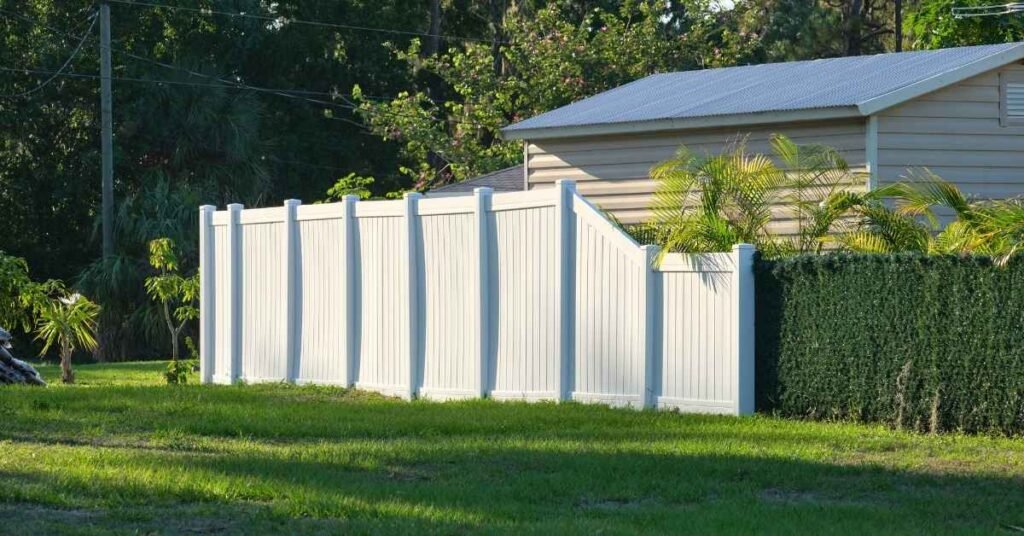Backyard Garden Wind Protection: Shielding Your Plants from Damage
Table of Contents
Introduction: The Impact of Wind on Your Garden
Wind can significantly influence the health and vitality of your garden, presenting both challenges and opportunities. While it plays a crucial role in pollination and helps moderate temperature extremes, strong or persistent winds can cause considerable damage. They can lead to soil erosion, disrupt plant growth, and even uproot young or shallow-rooted plants. Wind stress can also lead to physical damage, such as broken stems and torn foliage, impacting plant health and productivity.

Understanding the effects of wind on your garden allows you to implement effective strategies to protect your plants and maintain a thriving garden environment. By addressing wind-related issues through thoughtful garden design and protective measures, you can mitigate potential damage and enhance your garden’s resilience. Embracing these practices ensures that your garden remains robust and productive, regardless of the challenges posed by windy conditions.
Choosing Wind-Resistant Plants
Selecting wind-resistant plants and designing a strategic planting plan are essential for maintaining a thriving garden in windy conditions. By choosing the right plants and arranging them thoughtfully, you can reduce wind damage and enhance your garden’s resilience.
Best Plants for Windy Areas
When choosing plants for windy areas, opt for varieties that are naturally adapted to withstand strong winds. Low-growing, dense plants with flexible stems and robust root systems are particularly effective. Grasses such as Feather Reed Grass (*Calamagrostis x acutiflora*) and Blue Fescue (*Festuca glauca*) are excellent choices due to their ability to bend with the wind rather than resist it. Shrubs like the boxwood (*Buxus sempervirens*) and juniper (*Juniperus spp.*) offer wind resistance due to their compact, evergreen foliage.
Trees with flexible branches, such as the honeylocust (*Gleditsia triacanthos*) or the willows (*Salix spp.*), are also well-suited for windy conditions. These plants can better handle wind stress without breaking or uprooting.
Creating a Wind-Resistant Planting Plan
Designing a wind-resistant planting plan involves strategically placing plants to act as natural windbreaks and support structures. Position taller, wind-resistant trees and shrubs on the windward side of your garden to block and deflect strong winds before they reach more vulnerable plants. Use a combination of evergreens and deciduous plants to provide year-round protection. Layering plants, with taller trees in the back and shorter shrubs or grasses in the front, can create a multi-tiered windbreak that effectively reduces wind speed and turbulence.
Additionally, consider grouping plants together to create a microclimate, where the collective shelter of the plants helps protect each other from wind. Regularly assess and adjust your planting plan as needed to maintain optimal wind protection and ensure that all plants remain healthy and robust. By selecting wind-resistant plants and designing a thoughtful planting plan, you can safeguard your garden against wind damage and foster a resilient, thriving outdoor space.
Building Windbreaks and Barriers
Establishing effective windbreaks and barriers is essential for protecting your garden from the damaging effects of strong winds. Whether you opt for natural or artificial solutions, well-designed windbreaks can significantly enhance the health and stability of your garden.
Designing Natural and Artificial Windbreaks
Natural windbreaks involve the strategic planting of trees, shrubs, and grasses to shield your garden from prevailing winds. A combination of evergreen trees and shrubs, such as pines, spruces, and hollies, provides year-round protection by creating a dense barrier. Deciduous trees can be included for seasonal variation, but they are less effective in winter when they shed their leaves. Arrange these plants in multiple rows, with the tallest trees at the back and shorter shrubs or grasses in the front. This layered approach creates a gradual wind reduction, minimizing turbulence and protecting more sensitive plants.
Artificial windbreaks, on the other hand, include structures such as fences, walls, and screens. These barriers can be designed to complement the aesthetics of your garden while providing effective wind protection. Choose materials that are sturdy and capable of withstanding strong winds, such as wooden slats, metal panels, or durable mesh. The height and density of artificial windbreaks should be tailored to the prevailing wind conditions and the specific needs of your garden.
Using Fences, Hedges, and Screens
Fences are a popular choice for windbreaks, offering a solid barrier that can significantly reduce wind speed. Opt for slatted or lattice designs that allow some wind to pass through, reducing wind pressure on the fence and minimizing potential damage. Hedges, made from densely planted shrubs or trees, provide a more natural look while offering substantial wind protection. Be sure to choose species that grow thick and tall and maintain regular pruning to keep them dense.
Screens made from materials like bamboo or fabric can also be effective for blocking wind. They are particularly useful in areas where a temporary or movable solution is preferred. Ensure that screens are securely anchored and able to withstand strong winds. By carefully designing natural and artificial windbreaks and utilizing fences, hedges, and screens, you can create a well-protected garden environment that thrives despite challenging wind conditions.
DIY Wind Protection Projects
Effective wind protection is essential for maintaining a healthy garden, particularly in areas prone to strong winds. DIY wind protection projects can help you safeguard your plants without incurring significant costs. Two practical approaches include constructing simple windbreaks and protecting individual plants with covers.
Constructing Simple Windbreaks
Building a DIY windbreak can provide substantial protection for your garden. Start by selecting materials like wooden pallets, bamboo, or recycled fencing to construct your windbreak. For a basic wooden windbreak, position pallets vertically and secure them to posts or stakes driven into the ground. Space them aIntervals to allow some airflow, which reduces wind pressure on the structure. Bamboo can be used to create a more flexible and aesthetically pleasing barrier.
Install bamboo poles in a row and tie them together with sturdy twine or wire to form a lightweight but effective screen. For a more durable option, repurpose old fencing or wooden slats, arranging them in a staggered pattern to create a solid barrier that deflects wind while adding visual interest to your garden.
Protecting Individual Plants with Covers
Protecting individual plants from wind damage can be achieved using simple, inexpensive materials. One effective method is to create plant covers from old garden fabric or burlap. Drape the fabric over the plants, securing it with stakes or ties to keep it in place. For additional protection, use hoops made from wire or plastic piping to support the fabric, creating a mini shelter that shields plants from wind while allowing light and rain to reach them. Alternatively, use cloches or homemade covers made from clear plastic bottles or jugs.
Cut the bottoms off these containers and place them over young or vulnerable plants to act as windbreaks and mini-greenhouses. Ensure the covers are well-ventilated to prevent overheating and mold growth. By constructing simple windbreaks and using DIY plant covers, you can effectively protect your garden from wind damage, enhancing plant health and garden productivity while keeping costs down.
Maintaining Windbreaks and Protecting Your Garden
To ensure that windbreaks and garden protections continue to provide effective shielding, regular maintenance and adaptability are essential. Proper care and adjustments based on your garden’s growth will maximize the benefits of your wind protection strategies.
Regular Maintenance Tips
Maintaining windbreaks involves routine checks and upkeep to ensure their continued effectiveness. For natural windbreaks such as trees and shrubs, regular pruning is crucial. Remove any dead or damaged branches to maintain a dense, healthy barrier. Ensure that trees and shrubs are free from pests and diseases, which can weaken their wind resistance. If you use artificial windbreaks like fences or screens, inspect them periodically for damage caused by weather conditions or wear and tear.
Tighten loose fastenings, replace broken parts, and clean debris from slats or mesh to maintain functionality. For DIY structures, such as those made from wooden pallets or bamboo, ensure that they are securely anchored and not leaning or leaning. Regularly check for signs of rot or instability and address these issues promptly to prevent collapse.

Adapting Wind Protection as Your Garden Grows
As your garden evolves, so should your wind protection strategies. Young plants initially benefit from smaller, more targeted wind protection solutions, such as individual plant covers or small windbreaks. As plants mature and grow taller, reassess the effectiveness of your windbreaks and adjust accordingly. For instance, as trees and shrubs grow, you may need to heighten or expand your windbreaks to ensure they provide adequate coverage. Similarly, as your garden design changes, such as adding new beds or structures, incorporate these into your wind protection plan. Ensure that new plants are also included in the wind protection scheme by extending or modifying existing barriers.
By following these maintenance and adaptation practices, you can ensure that your windbreaks and protection strategies remain effective, keeping your garden healthy and resilient against wind damage. Regular care and thoughtful adjustments based on your garden’s growth will enhance the longevity and efficiency of your wind protection efforts.
Conclusion: Ensuring a Wind-Safe Backyard Garden
Ensuring a wind-safe backyard garden requires thoughtful planning and ongoing maintenance to protect your plants from wind damage. By implementing effective windbreaks, such as strategically placed trees, shrubs, or DIY barriers, and employing protective measures like plant covers, you create a shielded environment that fosters healthy plant growth. Regular maintenance of both natural and artificial windbreaks is essential to address wear and tear and ensure continued protection.
Additionally, adapting your wind protection strategies as your garden evolves helps accommodate growing plants and changing garden layouts. By integrating these practices, you can create a resilient garden that thrives despite challenging wind conditions. A well-protected garden not only enhances plant health and productivity but also contributes to a more enjoyable and sustainable outdoor space. With careful planning and proactive care, your backyard can remain a beautiful, wind-safe sanctuary year-round.
